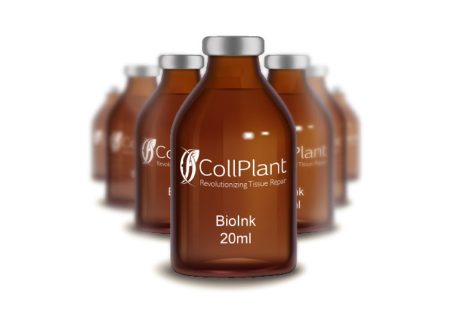November 7, 2018 – Israel-based CollPlant has developed rhCollagen BioInk to print organs and other body tissue including human lungs. In the most recent news United Therapeutics, a Maryland-based company has signed a licensing agreement to use CollPlant’s technology to develop and market soft-tissue repair kits that can repair tendons and wounds or produce a working set of human lungs for transplant.
CollPlant is the brainchild of Oded Shoseyov, a professor of chemistry at the Robert H. Smith Institute of Plant Science and Genetics, Hebrew University in Rehovot, Israel. He researched the use of recombinant human collagen fibers taken from a proprietary transgenic tobacco plant he developed, to treat external and internal injuries including foot ulcerations from diabetes, tendonitis, and ligament repair. Collagen is the main ingredient of CollPlant’s bio-inks.
What does Shoseyov’s invention mean for transplant surgery?
It seems ironic that a product from a transgenic tobacco plant could be used to build transplantable lungs. But that is the case. And although the agreement with United Therapeutics focuses on lungs primarily, CollPlant is also involved in business development of other bio-ink derived organs including 3D-printed corneas, and kidneys.
States Yehiel Tal, CEO of CollPlant, “We strongly believe that our proprietary and proven rhCollagen is the finest building block for regenerative medicine scaffolds available today, and will play a critical role in the organ manufacturing process.”
It is United Therapeutics wholly-owned subsidiary, Lung Biotechnology PBC, that has focused its energies on addressing the shortage of transplantable lungs and other organs. CollPlant will supply rhCollagen BioInk to the company to help it bring to market 3D-printed lungs.
So how does CollPlant work in the bioprinting process?
The BioInk adapts biological molecules for printing and cures to form a hydrogel that when irradiated by UV light produces scaffolds that match natural tissue properties from stiff cartilage to soft tissue. The bio-ink generated scaffolding and frameworks allow primary and differentiated human cells to populate the structures. In the case of the product that Lung Biotechnology is marketing, it will be human lungs populated with the recipient’s own cells and therefore will not lead to rejection and the need for a lifetime of taking immunosuppressive drugs.
The market for rhCollagen BioInk is large. In the United States alone, 900,000 die per year from organ failure. Current donated organ supply, however, meets only 3.3% of the annual demand leaving long wait times for life-saving transplants. Using 3D-printed biocompatible organs can alleviate this acute shortage and reduce overall lifetime costs for those receiving transplanted lungs or other organs built this way.









